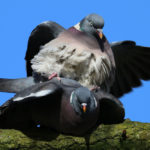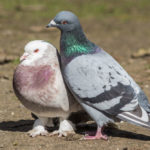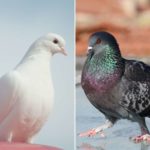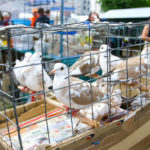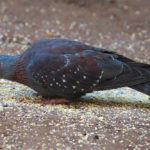Throughout the animal kingdom – heck, throughout the avian kingdom (that’s birds to you and us) – the approach of various species to mating is eclectic.
There are lots of birds that go to enormous lengths to make sure they pass on their genetic material. Some birds build structures and call to each other across ridiculous distances.
Some birds mate for life and fly halfway round the world to particular, traditional mating and nesting sites.
Some birds change their feather design, do extraordinary dances of strutting display, find the choicest food offerings to prove they’re carrying decent ‘provider’ genes that deserve a chance to be passed on.
And then… there are pigeons.
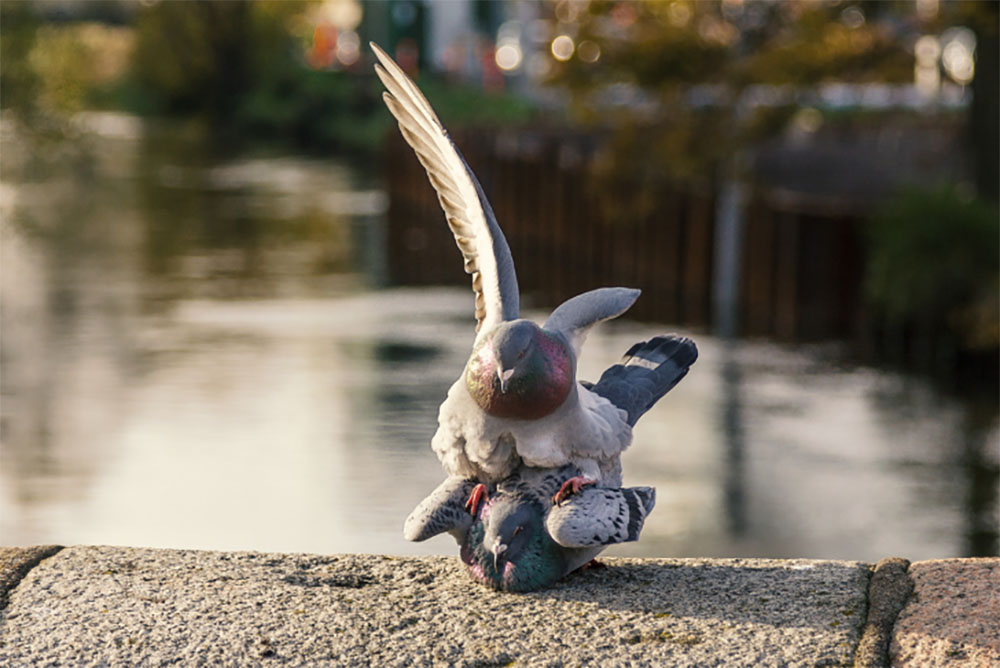
Pigeons, when all is said and done, have very little truck with the whole anthropomorphic notion of romance.
Ask a pigeon to wine and dine you before things get interestingly hot and heavy on date #3, and by the time you’ve finished framing the request, they’ve hopped off and mated twice with an entirely different pigeon, because frankly, they’re pigeons – they have things to do.
There are no sprawling epics of lovelorn pigeon relationships. No pigeons’ eyes meeting over a communal birdbath, and their fighting a disapproving world to be together.
Best Pigeon Erotica would, perhaps unsurprisingly, be a very short book.
Pigeons are not by any stretch of the imagination the great lovers of the animal kingdom.
They don’t mate because they’re gripped by some feather-fluffing passion. They mate with an evolutionary lack of prevarication.
In all fairness to pigeons, our view of them as spectacularly unromantic birds has more to do with our own mammalian prejudice than it does with their fundamental need to get genetic information from one bird into another, and from there, to develop that potential into an egg.
Here’s the thing.
Human beings are two things at once. They are firstly mammals, and secondly, they are mammals that have stepped outside things like a mating season.
In a way, we’re on the other end of a spectrum that starts with asexually reproducing amoeba and ends with the likes of us and the dolphins.
We mate to pass on genetic material, sure, but we also mate… more or less any damn time we feel like it, and more or less for fun.
To do that takes for granted some of the fundamental mechanics of our process of sexual reproduction.
We tend to think we’re very sophisticated, with our externally stored, erecting penises, our lubricating vaginas, and the sometimes fairly protracted process of getting them together before (if we’re lucky), the endorphin-releasing pleasure of getting genetic material from one human’s body into another’s.
Frankly, from an evolutionary standpoint, the pigeons are judging us as pretty wasteful sacks of mammal-flesh.
The Mechanics Of The Mechanisms
Where we have specialized systems and, in a very real sense, tools, for procreation, urination, and defecation, that’s an idea that tells of a creature (or family of creatures) that has a certain stability of existence and that draws an evolutionary benefit from separating out the various functions.
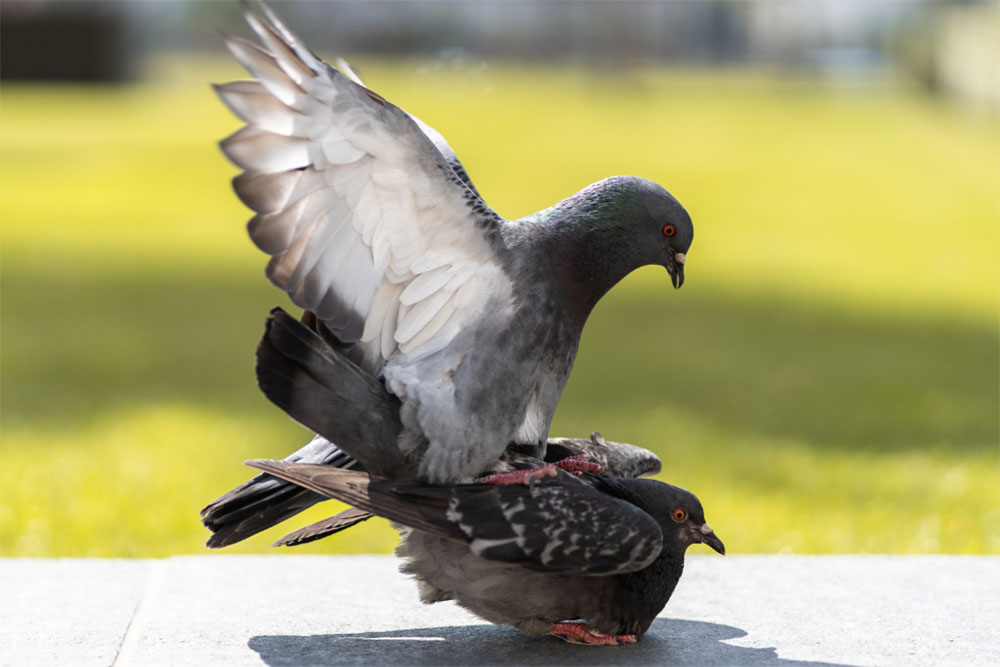
Pigeons? In fact, most birds?
Not so much.
There are no penises or vaginas in Pigeonworld. There are singular chambers that deal with all three processes. The chamber is called the cloaca.
Now, this singular-chamber approach to entrance to and evacuation from the body is extremely common.
Even human embryos have an embryonic cloaca before time and development separate the functions and the flesh needed to be recognizably mammalian and human.
(A darkly comic consequence of this is that while life may begin at conception, it spends at least a little while being more akin to pigeon life before it becomes recognizably human life).
The point is that this is a juncture where birds and mammals went separate ways. Mammals birth their young live, whereas birds hatch their young in eggs (giving hints of their reptilian ancestry).
And the important thing to hold in your mind about the cloacal method is that it works.
Recent research suggests we’ve domesticated pigeons as a species for over 10,000 years, and they were undoubtedly around a lot longer than that. And pigeons are in no danger of dying out.
Having a cloaca works for pigeons. But then… how do they do it?
Kiss My Cloaca
There’s every chance that if you stop and think about this for a second, pigeons do exactly what you imagine they do.
The mechanics are that the male’s cloaca will usually swell more than the female’s prior to mating, as sperm production goes insane.
The female, like many a weary wife and girlfriend, will know what’s coming, and adopt a position to make the whole thing as brief and easy as possible.
In the case of pigeons, she crouches down, both to present her cloaca and to provide the male with a stable platform.
Yes, a platform. It’s hardly the Kama Sutra, but the male will clamber up onto the back end of the female.
The female will, as it were, shake her tail feathers to expose her cloaca. Because males and aiming, it’s a fundamental law of nature…
Wham!
Wait, what?
That’s it. The birds touch their cloaca together in what is known as a “cloacal kiss” – and in that moment, the sperm is transferred, en masse, from the male to the female, whose cloaca (and there really is no more accurate description than this, or believe us, we’d use it) sucks the sperm up into her ovaries (which – yes, you guessed it – are housed in her cloaca).
After transferring his sperm in this single blink-and-you-miss-it moment of cloacal congress, the male frequently performs a ritual known as “clapping.”
He will fly up and flap his wings forward, as though giving himself a standing ovation.
Again, humans and pigeons – more similar than you ever imagined.
And once the pair have had their first sex of the season, it’s likely they will both remain sexually aroused for about a week.
You know the feeling of that week.
It’s the week when the world has that ‘new relationship smell’ and like humans, our cloacal kissing pigeons may well come back together to have more sex several times within that week, to maximize the likelihood of conception.
It’s not passionate, it’s not prolonged, and it’s not particularly pretty, but with over 400 million pigeons in the world, there’s no arguing with the fact that it works.
Sure, there are nearly 8 billion humans alive right now, so yay mammals and healthcare, but considering it all comes down to a kind of momentary butt-kissing, the pigeons are doing just fine.

